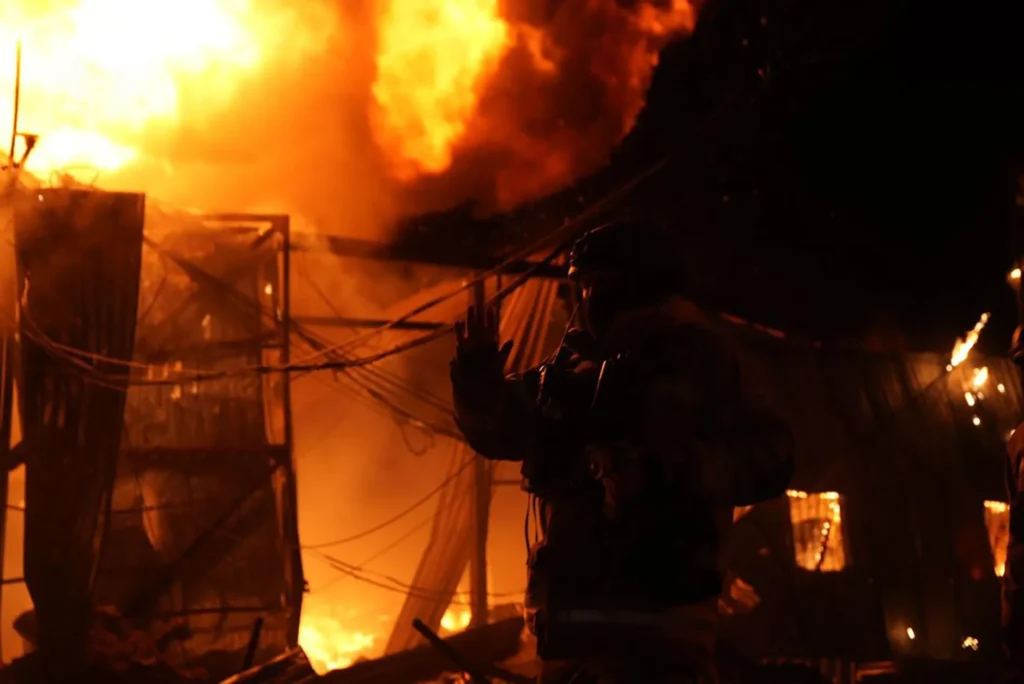NATO forces were placed on high alert and scrambled fighter jets after Russian President Vladimir Putin launched one of the most extensive and aggressive air assaults of the war, involving nuclear-capable bombers and waves of ballistic missiles aimed at key Ukrainian cities. The strikes came less than 24 hours after a deadly missile attack on President Volodymyr Zelensky’s hometown of Kryvyi Rih, where at least 19 people—including nine children—were killed.

In the early hours, sirens wailed across Ukraine as multiple regions were hit by an intense and prolonged bombardment lasting nearly eight hours. Strategic Tu-95MS bombers deployed from Russian territory fired Kh-101 cruise missiles from above the Caspian Sea, according to Ukrainian defense officials. Simultaneously, Kyiv was assaulted with ballistic missiles, kamikaze drones, and aerial bombs, leaving several districts engulfed in flames and heavily damaged.
In response to the large-scale Russian operation, NATO activated air patrols along its eastern flank. Polish fighter jets, along with aircraft from other allied nations, were deployed to monitor airspace close to Ukraine’s borders. The Operational Commander of Poland’s Armed Forces confirmed the urgent mobilization, stating:
“Due to the intensive activity of the long-range aviation of the Russian Federation performing strikes on targets in western Ukraine, Polish and allied aviation operations have commenced. All available air defense and radar systems are on maximum alert.”
NATO’s action reflects the growing concern that Russia’s escalating air campaigns could threaten nearby NATO territory or result in accidental incursions.
The capital city, Kyiv, experienced widespread destruction as at least ten ballistic missiles rained down, triggering fires in the Darnytsia, Obolonskyi, and Solomynskyi districts. Residential buildings, warehouses, and a furniture store were among the many structures damaged or destroyed. Emergency services reported at least three people injured in Kyiv alone, while firefighters rushed to contain flames and rescue trapped civilians.
In Obolonskyi, a multi-story building partially collapsed under the impact of the explosions, forcing residents to take shelter in underground metro stations. Elsewhere in Ukraine, the strikes extended to Uman in the Cherkasy region and Kupyansk in the Kharkiv region. In Kupyansk, a Russian aerial bomb hit an apartment block, injuring a 78-year-old woman and a 67-year-old man, sparking another massive fire.
The missile barrage follows Friday’s devastating attack on Kryvyi Rih, which marked one of the deadliest days of 2025 for Ukraine. Russian missiles struck residential neighborhoods, killing 19 civilians—nine of them children—and injuring at least 61 more. According to Ukrainian authorities, Russia falsely claimed it had conducted a “precision strike” on a restaurant hosting Ukrainian military personnel and foreign advisers. However, eyewitness accounts and emergency footage revealed the strike hit homes and a nearby park where children had been playing moments before the blast.
Scenes of horror unfolded as bloodied survivors were pulled from rubble, many carried away on stretchers. Parents screamed for missing children while firefighters fought to extinguish raging fires in residential zones. Ukrainian officials accused Russia of deliberate misinformation and war crimes.
Ukraine and its Western allies say the renewed wave of Russian aggression underscores President Putin’s blatant disregard for any peace negotiations, despite recent U.S.-brokered ceasefire proposals. President Trump has repeatedly called on Moscow to accept terms that would de-escalate the conflict, but the latest coordinated attacks have dashed hopes of an imminent resolution.
Ukrainian military leaders called the attack “a clear sign that the Kremlin intends to prolong the war and inflict maximum damage on Ukraine’s civilian infrastructure and morale.” President Zelensky urged international partners to intensify pressure on Moscow, calling for stronger sanctions, more advanced air defense systems, and additional humanitarian support.
As NATO remains on high alert and Ukrainian cities reel from another night of terror, the conflict shows no signs of abating—further highlighting the high stakes for both regional stability and global security.



